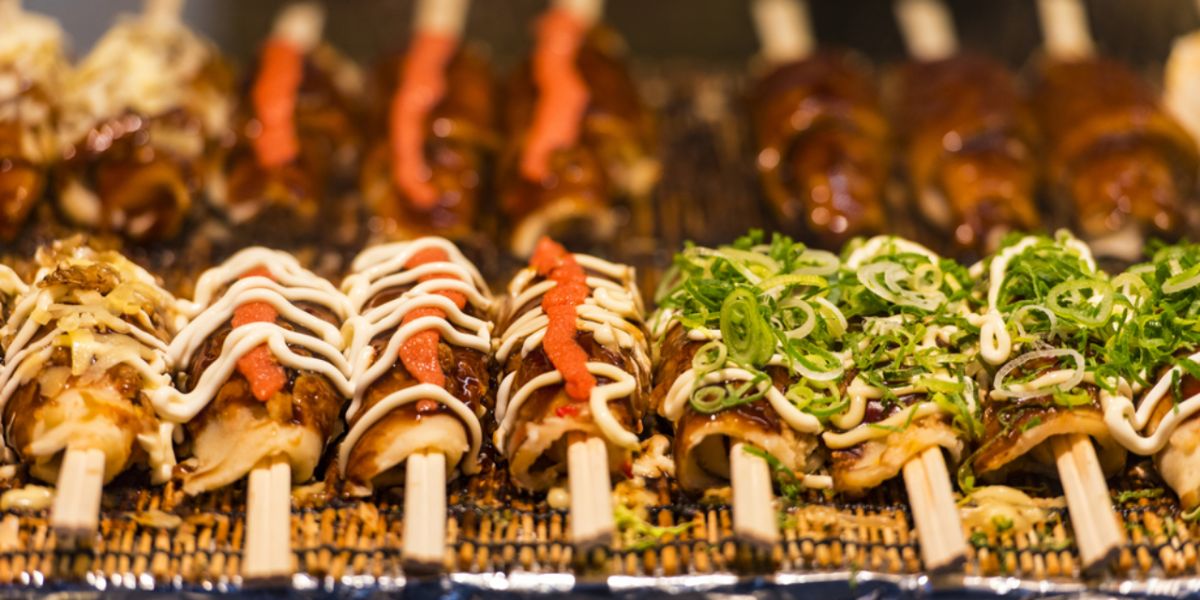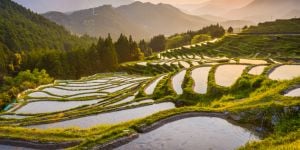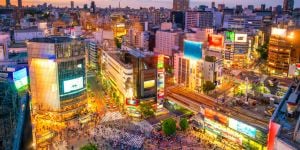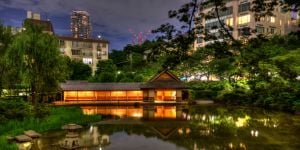
In Tokyo, as in other places in Japan, tasty and cheap local dishes are easy to find. The different regions of Japan offer an infinite number of recipes for ramen, tonkatsu, and soba. So, let's hop on a gastronomic tour of Tokyo.
Tokyo's culinary specialties
Soba
Soba are noodles made from buckwheat flour. The Japanese eat them hot or cold, the latter being the most common version, which is called “zarusoba”. Cold soba is presented in a basket and eaten after being dipped in a sauce. Each region has its own recipe, and in Tokyo, the sauce (sobatsuyu) is thick and very salty. Further south, the sauce is lighter, but beware of confusion! The very popular yakisoba, which is fried noodles, is not soba.
More than a mere dish, soba is part of Tokyo's lifestyle. It is eaten on New Year's Eve in the hope of a long and healthy life. The very shape of the soba symbolizes longevity and vitality. The noodles are very long and have a relatively solid and dense texture. Make sure not to break them during preparation! Soba goes with other vital moments in life, like when moving houses. Japanese eat them and share them with their new neighbors.
Monjayaki (門じゃ焼き)
When talking about “monjayaki”, one may think of okonomiyaki, that Japanese pancake from Osaka. In fact, Tokyo also has its own variant, and it is indeed the “monjayaki”.
The base is the same: flour and water for the dough. The cooking method (on a baking sheet) is also similar. The monjayaki is more liquid and wobblier than the okonomiyaki. Like its Osaka cousin, monjayaki is also available with meat, seafood, etc.
Monjayaki is the specialty dish of Tsukishima. If you have time, why not head to this artificial island and try a delicious runny pancake with various ingredients like seafood, meat, and vegetables in the batter here? Nishinaka Street, located just a short walk from Tsukishima Station, has many monjayaki restaurants to satisfy your taste buds.
Nabe
In Japanese, nabe means “pot”. It is also the name given to a very popular dish in Tokyo and in all of Japan. A mix between fondue and pot-au-feu, nabe is the national winter dish. It is very simple to prepare. Its base is a broth made of water, or konbu (a Japanese seaweed) water, to which finely chopped seasonal vegetables like Chinese cabbage, carrots, and mushrooms are added. The nabe can be prepared according to your taste with meat, fish, etc.
Nabe is a family-friendly dish. The food is left to simmer on a stove at the center of the table. You can also enjoy it at the restaurant and seize the opportunity to try chanko nabe, the emblematic dish of sumo wrestlers.
When it comes to local hotpots in Tokyo, you should definitely try Negima nabe, Sakuranabe, and Loach nabe.
Negima nabe is a traditional dish from Edo made with green onions and tuna. It's a popular choice and even mentioned in haiku poems. The combination of green onions and tuna is simply delicious, and you can enhance the flavor by adding yuzu and pepper.
On the other hand, Sakura nabe is a Tokyo specialty made with horse meat cooked in a miso-flavored hotpot. It's a healthy option as horse meat is high in protein and low in calories.
Lastly, there's Loach nabe, a hotpot dish with boiled loach. There are different variations like round hotpots, tanuki hotpots, and Yanagawa hotpots. Each has its own unique taste and preparation method.
Useful link:
Japanese nationwide local hot pots
Ramen
Historically, ramen comes from China, but these wheat noodles were quickly adopted by the Japanese, who adapted the recipe to their own culinary culture. Today, ramen can be used in an infinite way. It is so popular that it has its own museum in Yokohama. Ramen restaurants (ramen-ya) can be found all over the place. They often stay open very late. You can even find mobile râmen-ya, the yatai, which stops at the entrance of a station or in a pedestrian street to serve a last bowl of ramen to Tokyoites at night. In Tokyo, you can find shio râmen (salt seasoning).
Cup ramen
As a result of its success, a ready-made version of the ramen was needed. Actually, the “cup ramen” has everything one could wish for. Expect an infinite number of flavors with the simplest preparation. Add a little hot water, wait a few minutes, and it's ready. At the ramen museum, you can also prepare and take your own cup ramen away.
Sushi
Sushi is, without a doubt, the most exported Japanese food, but you are perhaps not aware that there are several kinds of sushi.
The chirashi-zushi, for example, is served as a donburi (a bowl of rice) with slices of raw fish and vegetables. In fact, it is more like a “squashed” version of a sushi dish.
The nigiri-zushi is the most known sushi abroad. This is the famous sushi made of vinegar-coated rice, on which a slice of raw fish is placed. It can also be served wrapped in a sheet of nori (dried seaweed).
The gunkan-maki consists of fish roe on vinegar-coated rice. A large sheet of nori wraps the whole. A large sheet of nori holds the vinegar-coated rice and then the condiments. The whole is then rolled up (“maki” means “roll”), then sliced into bite-sized pieces.
Tempura
Tokyo's specialty, tempura, is fritters made of vegetables, fish, seafood, etc. Although they may look simple to make, their cooking is actually more sophisticated than it seems. Tokyo tempura distinguishes itself thanks to the fine frying technique and the thin dough that wraps the filling, guaranteeing crispness and lightness.
The best restaurants in Tokyo
The Japanese capital is home to a myriad of prestigious restaurants. Needless to point out that prices can sometimes be dizzying. In the list below, only one restaurant is said to be affordable.
RyuGin (Roppongi)
RyuGin restaurant combines ancestral know-how and modernity to reinvent molecular cuisine – A visual and gustatory treat.
Kagurazaka Ishikawa (Kagurazaka)
This Japanese restaurant is quite elegant and offers kaiseki ryori. The kaiseki ryori is the quintessence of Japanese gastronomy with its multi-course high-end meal that combines a collection of skills and techniques. At Kagurazaka Ishikawa, the taste counts as much as the presentation in the purest Japanese tradition.
Yakitori Imai (Shibuya)
Yakitori is one of the most popular dishes in Japan. These skewers of grilled meat can be eaten to your heart's content. Yakitori Imai restaurant offers the best meats and selects the best vegetables to turn an everyday dish into an exceptional meal.
Sukiyabashi Jiro (Ginza)
The founder of Sukiyabashi Jiro restaurant, Jiro Ono, has taken sushi to a new level. His restaurant is one of the most popular in the world. However, booking is not required, although the place is always packed. The restaurant offers an intimate, minimalist setting with only 10 seats. Jiro Ono has served some of the world's most famous people, from former President Barack Obama to the late star chefs Alain Ducasse and Joël Robuchon.
Popular cuisine in Tokyo
Let's now examine Tokyo's popular cuisine, which is as good as ever and more affordable.
Gyudon chains
Have you ever tried gyudon, also known as beef bowl, in Japan? It is a popular dish created in the 1890s. Some well-known gyudon chain restaurants include Matsuya, Yoshinoya, Nakau, and Sukiya. You can find them in many places in Tokyo, especially near train stations and busy areas.
The Japanese curry
In Japan, curry has nothing to do with what you might be used to. As for the ramen, the Japanese have entirely revisited the dish. It is a very popular dish of white rice and a thick sauce (curry) with vegetables. The curry can be topped with katsudon (breaded pork). It then becomes katsukare. Other variations exist.
The most famous curry chain, Curry House CoCo Ichibanya (nicknamed CoCo Curry or CoCo Ichi), offers various curries, from vegetarian to hamburger curry to cheese, fish, or sausage curries.
Kaiten zushi
Since many people cannot afford to eat at a master sushi restaurant, kaiten zushi, or sushi chains, are exciting alternatives. Their quality/price ratio is unrivaled. Sushi-ro and Genki sushi are among the other sushi chains operating all over Japan, including Tokyo.
Naturally, this list could be more extensive. We'll let you add to it as your culinary adventures unfold.
Useful links:
We do our best to provide accurate and up to date information. However, if you have noticed any inaccuracies in this article, please let us know in the comments section below.








